Hair transplantation in just 2 days in Cancun, first results visible in 2 weeks. Accommodation and transport included.
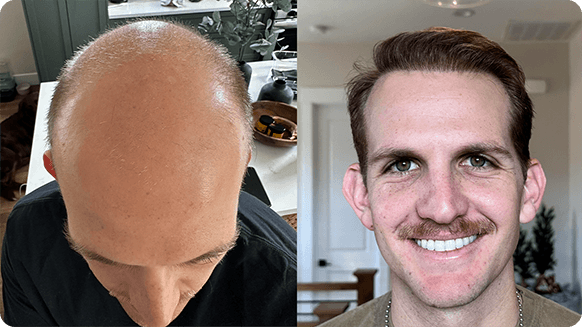




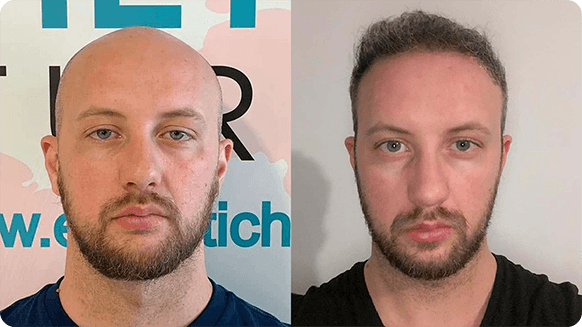
Consultation
During the consultation, the degree of hair loss is determined, and the doctor assesses the number of grafts needed for the transplant. Additionally, during the consultation, the doctor will discuss all possible treatment options with the patient, explain the transplant procedure, and answer all questions.
When the patient arrives at our clinic for a hair transplant, the consultation with the doctor becomes the first and most crucial step in the process. The doctor conducts a thorough evaluation of the patient’s hair condition and determines the degree of baldness.

Hair Transplant Process
1. Consultation and Planning:
During this stage, the doctor examines the patient’s scalp, discusses their expectations and goals, and determines the treatment plan. The patient is informed about all aspects of the upcoming procedure.
2. Preparation for the Procedure:
This includes trimming the hair in the donor area (usually at the back of the head) to simplify access to the follicles.
3. Marking the Head:
The doctor draws lines on the scalp to define the areas where the hair will be transplanted, including the hairline and the areas with the most baldness.
4. Local Anesthesia:
Local anesthesia is administered to both the donor and recipient areas to minimize discomfort during the procedure.
5. Graft Extraction
The doctor carefully extracts the hair follicles or grafts from the donor area one by one using the FUE (Follicular Unit Extraction) technique with a micromotor, minimizing trauma to the surrounding tissues.
6. Hair Transplantation:
Using a Choi Pen, the doctor directly implants the grafts into the scalp with the DHI (Direct Hair Implantation) technique, reducing trauma and speeding up the healing process.
7. Bandaging the Donor Area:
After the grafts have been transplanted, the doctor applies a sterile bandage to the donor area to prevent infection and support the healing process.
8. Hair Washing and Care Instructions
On the day following the transplant, the patient returns for their first hair wash, which is a crucial part of the post-operative care. During this visit, medical staff demonstrate the proper techniques for gently washing the scalp to avoid disturbing the newly transplanted grafts. The patient is also provided with detailed instructions on how to care for their hair in the days following the procedure, including tips on using specific shampoos and avoiding certain activities that might impact the healing process. This guidance helps ensure optimal results and the health of the transplanted hair.
Daily Progress from Day 1 to 12 After Hair Transplant
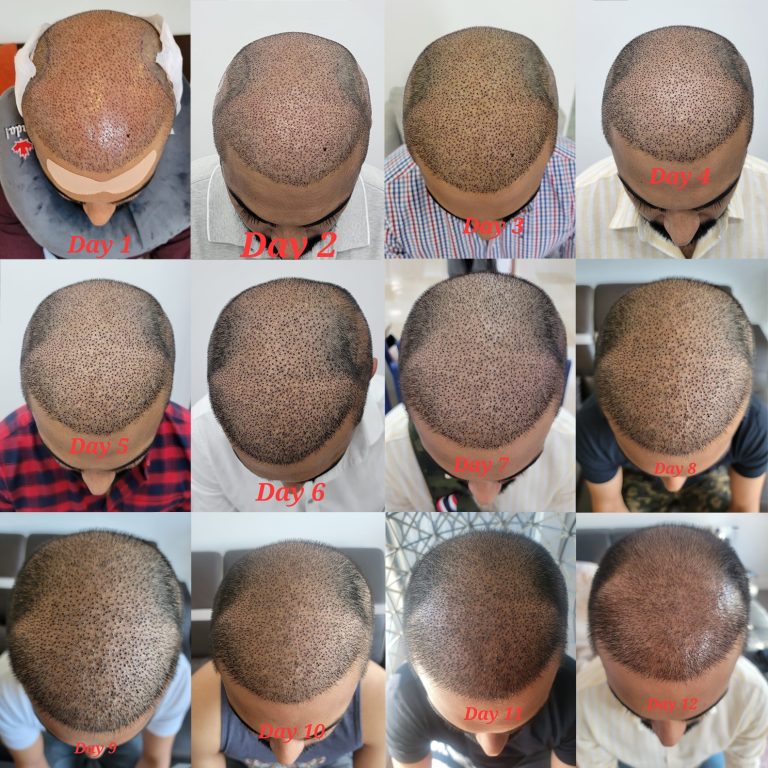
Send Your Photos for Graft Estimate

For us to create a personalized treatment plan for your hair transplant, we need a photos from you. Based on the example photo shown, please ensure your images are:
These photos will help our specialist accurately evaluate your case and determine the best approach for optimal results.
Results: Before and After



Recommendations Before a Hair Transplant
Before a hair transplant, it is usually recommended to start taking certain medications and follow some guidelines six months to a year before the procedure. Following these recommendations will help you prepare for the hair transplant procedure, increase the chances of a successful operation, and improve the results.
Important Warning:
Before starting any medications or following medical recommendations in preparation for a hair transplant procedure, it is strongly advised to consult with a qualified medical professional. All medications and procedures can have side effects or cause adverse reactions, especially if you have chronic conditions or are taking other drugs.




Minoxidil (Rogaine)
A topical solution applied directly to the scalp, Minoxidil stimulates hair growth and improves scalp circulation. It works by widening blood vessels, which allows more oxygen, blood, and nutrients to the hair follicles. For best results, it should be applied twice daily and is effective for both men and women.
Finasteride (Propecia)
This medication helps slow down hair loss and can improve the condition of existing hair by inhibiting the hormone responsible for hair thinning. It is typically taken once a day and can significantly increase the chances of retaining and thickening your existing hair.
Biotin Supplements
Biotin, also known as Vitamin B7, supports healthy hair growth by improving the keratin infrastructure. Taking biotin supplements can strengthen your hair and reduce shedding.
Vitamin D
Vitamin D is crucial for hair follicle cycling, and a deficiency can lead to hair thinning and loss. Supplementing with Vitamin D can promote hair regrowth.



Healthy Diet
Maintaining a diet rich in essential vitamins and minerals is vital for optimal hair health. Focus on consuming foods high in iron, zinc, biotin, and other B vitamins, as these nutrients are crucial for hair growth and strength. Include a variety of fruits, vegetables, lean proteins, and healthy fats in your diet to provide your hair with the necessary building blocks. Foods such as eggs, nuts, seeds, spinach, and fish are particularly beneficial for hair health.
Stress Management
Chronic stress can significantly impact hair health, potentially leading to increased hair loss and slower growth. It is essential to incorporate stress-reducing practices into your daily routine. Consider activities such as regular exercise, yoga, meditation, and deep-breathing exercises. Ensuring you get adequate sleep and maintaining a balanced work-life routine can also help mitigate stress levels and promote healthier hair growth.
Scalp Massage
Performing regular scalp massages can significantly improve blood circulation to the hair follicles, which in turn may promote hair growth and strengthen the roots. A 5-10 minute daily massage using gentle circular motions can help stimulate the scalp, reduce tension, and enhance the overall health of your hair. You can also use essential oils, such as rosemary or peppermint oil, which have been known to further boost circulation and support hair growth when massaged into the scalp.
Post-Hair Transplant Care: What to Avoid
The following guidelines have been crafted to help you navigate the recovery phase with ease. Follow these closely to protect your investment and achieve the best possible outcomes.
Gym and Intensive Workouts:
Avoid going to the gym and engaging in intensive exercises for the first 2-3 weeks after the transplant if you can prevent sweating from the head. If activities cause sweating, especially around the head, it’s best to wait a full month before resuming such exercises. Steer clear of any activities that may raise your blood pressure during this period.
Light Exercises:
Walking and gentle stretching are permissible a few days post-operation, but avoid bending over or making sudden head movements.

Washing:
We recommend choosing products with natural ingredients such as aloe vera, chamomile, and tea tree oil, which soothe the scalp, reduce dandruff, and promote hair growth. Regular use of such gentle products helps keep the scalp clean, free from excess oil, dirt, and cosmetic residues, positively affecting the health of hair follicles. Our clinic advises using a mild shampoo like Johnsons Baby, known for its gentleness and safety for daily care.

Hair Styling:
Avoid using hair dryers, straighteners, or other styling devices at high temperatures for the first month after the transplant.

Alcohol and Smoking:
Refrain from consuming alcohol, smoking, and caffeinated beverages such as coffee and cola for at least two weeks after the procedure. These substances can negatively affect the blood supply to the scalp and slow down the healing process. Alcohol and caffeine can lead to dehydration and increase blood pressure, both of which can exacerbate swelling and impede the recovery of the transplanted hair follicles. Similarly, smoking restricts blood vessels and reduces oxygen and nutrient delivery to the healing tissues, further delaying the healing process.

Medication Intake:
Consult with your doctor about any medications you are taking, as some may affect healing and bleeding.
Some, like anticoagulants (e.g., warfarin) and non-steroidal anti-inflammatory drugs (NSAIDs) such as aspirin and ibuprofen, can increase the risk of bleeding. Be sure to check if it’s possible to temporarily stop or switch these medications to minimize risks and support the healing process.

Sleep:
During the first night after a hair transplant, it is very important to maintain your head in an elevated position. This helps to avoid direct contact of the operated area with the pillow and prevents swelling. It is recommended to use several pillows to sleep in an almost sitting position, which facilitates fluid drainage and reduces the risk of swelling. This position also helps to minimize potential pressure on the transplanted follicles that can occur when lying on a flat surface. Avoid sleeping on your side or stomach, as this can increase pressure on the transplanted areas and contribute to the displacement of the follicles or their damage.

Head Tilt Risks:
Bending your head down to look at your phone can increase tension and pressure on newly transplanted hair follicles. This unnatural head posture can lead to increased swelling and disrupt the healing process, potentially displacing the grafts. You can find photos online showing how improper posture after hair transplant surgery can cause the head to swell. We strongly recommend keeping your head up to avoid such complications and ensure proper healing.

Sun Exposure and Saunas:
Avoid prolonged sun exposure and visits to saunas or steam rooms for the first month post-operation to prevent additional irritation or inflammation of the scalp.

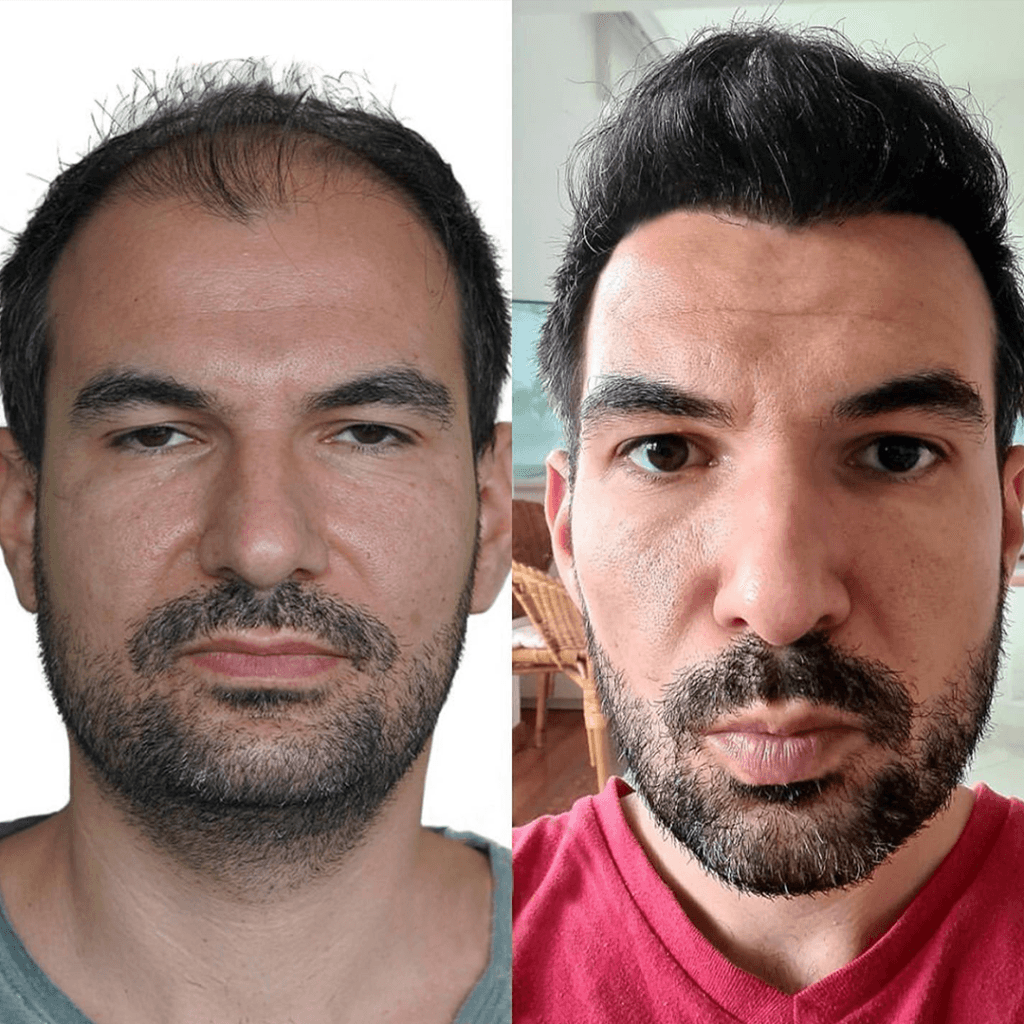
Calculate Your Grafts!
Click to take our survey, and find out if you’re a candidate. Our doctor will send you a personalized treatment plan with the exact number of grafts you need.
Our Advantages

Patient Comfort First
We prioritize your comfort above all else

7 years of experience
Clinics in Turkey and Mexico with over 2,500 happy clients
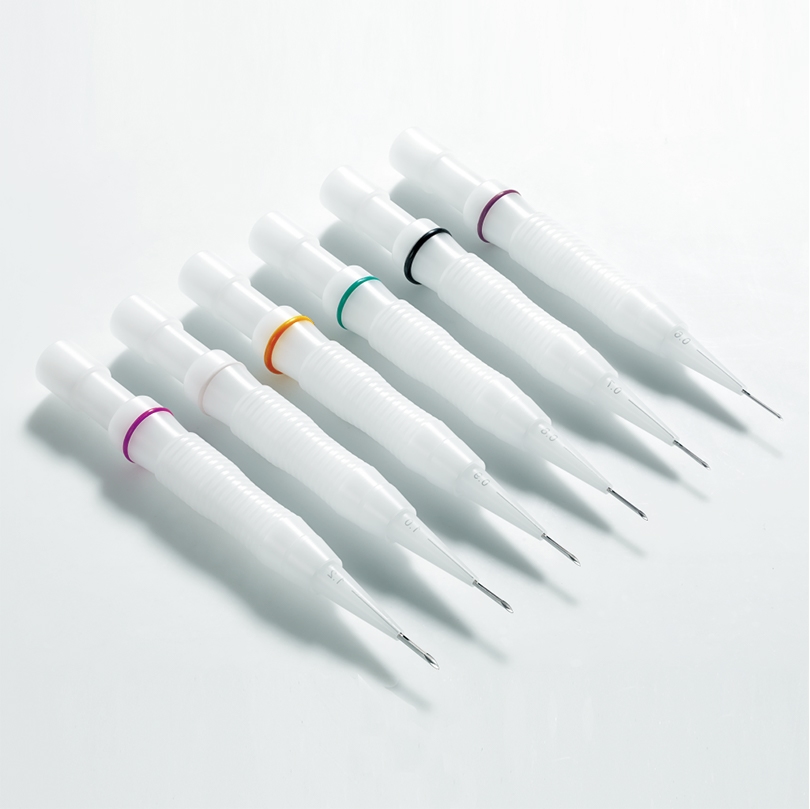
Modern equipment
from South Korea, USA, Germany, Italy

Stable pricing
Our procedure prices have stayed the same for 5 years
Central location
Convenient location, 10 minutes from Cancun center

Ongoing training
Doctors continually upgrade skills through training in Turkey

Experienced doctors
Experienced doctors with 3 to 15 years of practice

Painless treatment
You won’t experience sharp pain during the procedure
A Few Numbers
Explore our professional background of excellence
F.A.Q.
A hair transplant procedure is not suitable for everyone. Good candidates are those with stable hair loss or thinning hair who have a sufficient amount of donor hair on the back or sides of their head. A consultation with a doctor will help determine if this procedure is right for you.
Initial results become noticeable 3-4 months after the procedure, but the full effect usually appears within 9-12 months as the transplanted hair fully grows out.
The hair transplant procedure is performed under local anesthesia, which may cause some discomfort during administration. However, patients do not experience pain during the procedure itself. Any discomfort after the procedure is also possible but can be easily managed with standard pain relief medication.
Follicles are stored in a special cooled solution, and once the required number is extracted, they are immediately transplanted to the balding area. The entire process is carefully organized to minimize the time follicles spend outside the body and to maximize their survival rate. The duration also depends on the number of grafts being transplanted.
The density during a hair transplant procedure is typically up to approximately 10 grafts per square centimeter. Each graft can contain between 1 to 5 hairs, ensuring a natural and dense result.
Our doctors have an average age of 30. This is important so they can perform complex procedures like DHI with maximum precision and accuracy, which require a high level of concentration.
Transplanted hair may fall out about 3 weeks after the procedure, which is a normal part of the process. After that, new hair will begin to grow, and the results will be permanent.
In most cases, one procedure is sufficient to achieve the desired result. However, in cases of significant hair loss, a second procedure may be necessary. Additionally, for those who want to increase hair density over time, an additional procedure may be required.
- Av. Huayacan esq. Calle Ciricote Smz. 313 Mza. 257 Local 1-100, 77500 Cancún, Q.R.
- clinic@hairtransplantbyturkish.com